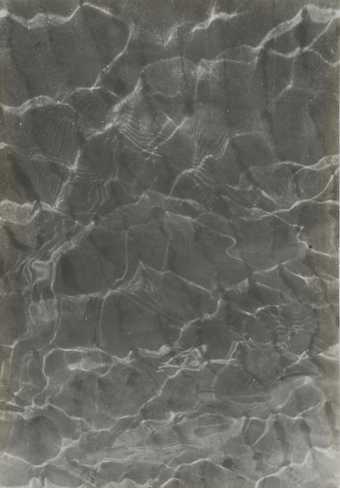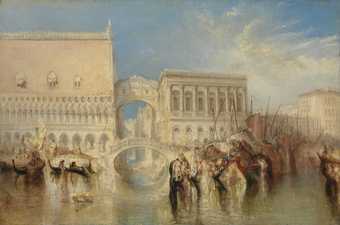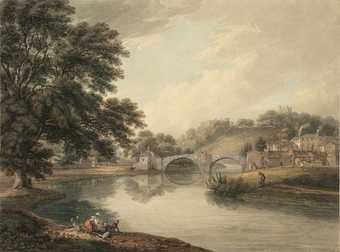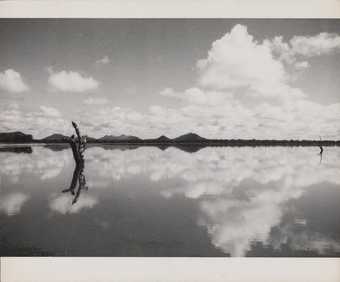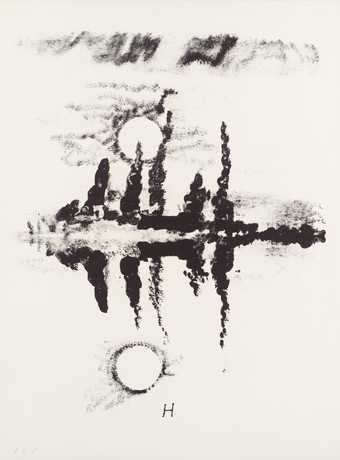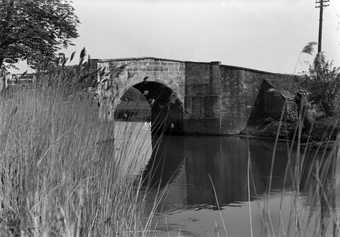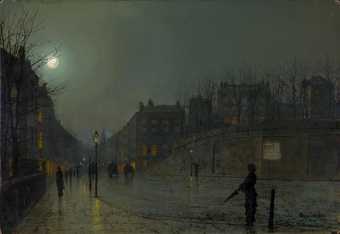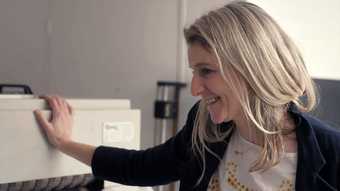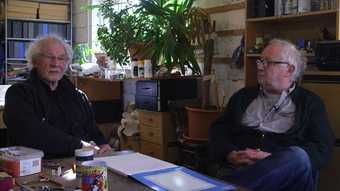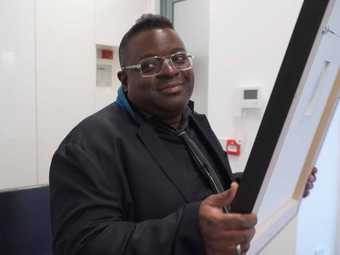The myth of Narcissus told the ancient Greeks of the seductive power of reflection, and the danger of becoming too interested in it. Narcissus was a beautiful young man, who was cursed to become enthralled with his own image reflected in a pool. Unable to tear himself away from staring at his own entrancing reflection, he wasted away and was transformed into a daffodil flower. This idea of entrancement by our own image has become a part of our culture, especially as we now see our own images reflected to us daily.
Artists frequently paint or draw their own image, perhaps because it's simpler to use yourself as your subject than find someone to sit still for you to study. Showing the edge of the mirror makes it clear that the artwork is a self portrait as in Jean Cooke’s Self-Portrait 1958.

Jean Cooke (Jean Bratby)
Self-Portrait
(1958)
Tate
Do you think studying your physical image can reveal something about the person within? Maybe the other objects reflected give some clues to what the artist would like to present themselves or their subject as.
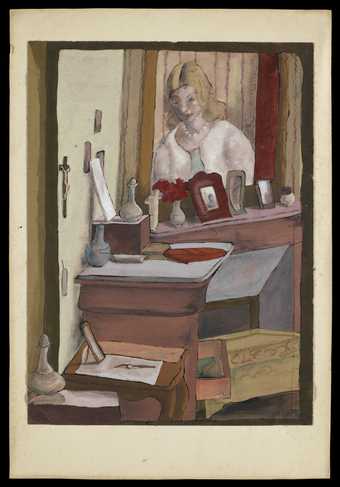
Ithell Colquhoun
Watercolour showing the corner of a room with a woman reflected in a mirror
([c.1920–7])
Tate Archive
Often an artist can include a self portrait in a bigger composition, by including a mirror in the centre that reflects the artist capturing the rest of the scene.
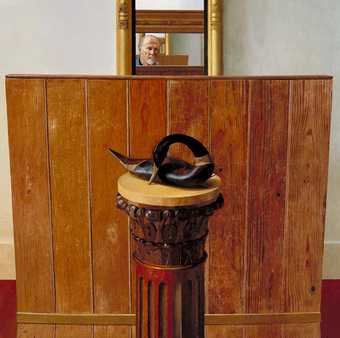
Norman Blamey
Decoy Duck and Self-Portrait
(1984–5)
Tate
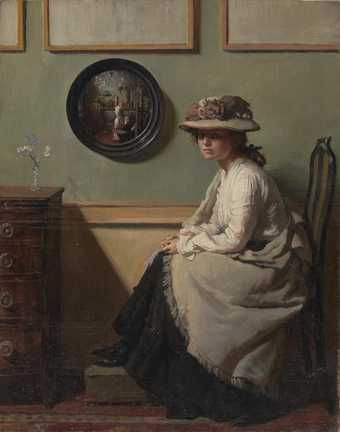
Sir William Orpen
The Mirror
(1900)
Tate
In fact we’re so used to seeing this device that sometimes it’s a surprise when a central mirror doesn’t include a self portrait!
Hockney made many studies of his parents before settling on this composition, and in fact abandoned an earlier version which did include a self-portrait reflected in the dressing table mirror.
Frances Stark flips the idea another way. Her self portrait could be seen as the traditional subject of this work while her assistant Bobby Jesus is reflected in the mirror hanging over her. However, the title Behold Man! Suggests to us that we are to think about Stark’s viewpoint – she is looking out and what we see in the mirror, Bobby Jesus, moving a painting of a naked man ( a work by another artist, Sylvia Sleigh). This makes us think again, asking who is the viewer and who is being viewed?

Frances Stark
Behold Man!
(2013)
Tate
Taking this a step further, Michael Baldwin, working as part of the collective Art & Language simply placed a mirror in the gallery. It’s a painting in which the artist has no control over what is represented in it. When it was on display in Tate Modern, it was one of the most popular artworks posted on social media, containing a selfie of course.
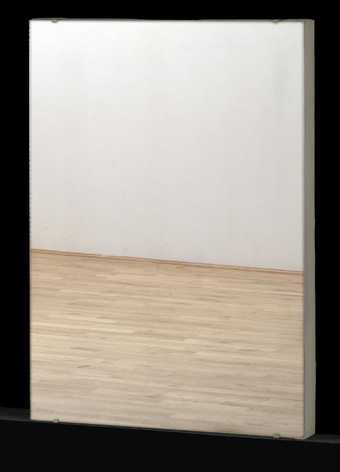
Art & Language (Michael Baldwin)
Untitled Painting
(1965)
Tate
Michelangelo Pistoletto’s take on a mirrored work also includes an image of the back of a standing man, adding another layer of illusion and confusion to the viewer - are they part of the work or not?
‘The mirror paintings could not live without an audience. They were created and re-created according to the movement and to the interventions they reproduced. The step from the mirror paintings to theatre – everything is theatre – seems simply natural ... It is less a matter of involving the audience, of letting it participate, as to act on its freedom and on its imagination, to trigger similar liberation mechanisms in people/’
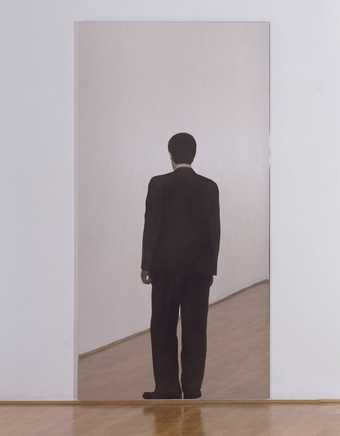
Michelangelo Pistoletto
Standing Man
(1962,1982)
Tate
Mirrors & Glass
Many artists have used mirrored or glass surfaces as sculptural material. Using a shiny reflective surface in the gallery could be seen as an opposition to expressive painterly techniques. The manufactured smoothness of a glazed surface removes all traces of the hand of the artist. It forces us to think of other ways into the artwork, focusing on form and structure and our own interactions with the space and the work.

Mary Martin
Inversions
(1966)
Tate

Gerhard Richter
Corner Mirror, brown-blue (737-1, 737-2)
(1991)
ARTIST ROOMS Tate and National Galleries of Scotland
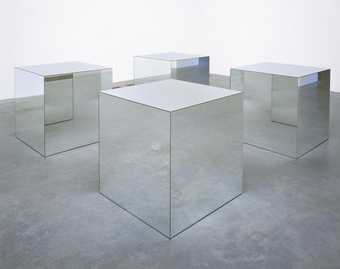
Robert Morris
Untitled
(1965, reconstructed 1971)
Tate
A mirror has power to add another dimension to a narrative. Hannah Starkey’s large scale photographic works use a mirror to add intensity to her set ups. Printed at more than a metre wide, the images look like stills from a film. Even though the images may contain two women watching each other or themselves in the mirror, they seem to have a sense of eerie isolation.
Unwanted reflections
Roy Lichtenstein was an influential pop artist, inspired by the printing methods and graphic style of comic strips. Lichtenstein produced paintings on a large scale often of single frames of a comic book story, both documenting the genre and also offering a tongue-in-cheek parody. He created seven Reflections prints during 1989 and 1990, saying:
‘It started when I tried to photograph a print by Robert Rauschenberg that was under glass. But the light from a window reflected on the surface of the glass and prevented me from taking a good picture. But it gave me the idea of photographing fairly well-known works under glass, where the reflection would hide most of the work, but you could still make out what the subject was. Well, I tried to do a few photographs in this manner; but I am not much of a photographer. Later the idea occurred to me to do the same idea in painting; and I started this series on various early works of mine … It portrays a painting under glass. It is framed and the glass is preventing you from seeing the painting. Of course the reflections are just an excuse to make an abstract work, with the cartoon image being supposedly partly hidden by the reflections.’
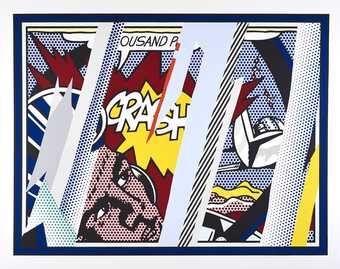
Roy Lichtenstein
Reflections on Crash
(1990)
ARTIST ROOMS
Tate and National Galleries of Scotland. Lent by The Roy Lichtenstein Foundation Collection 2015
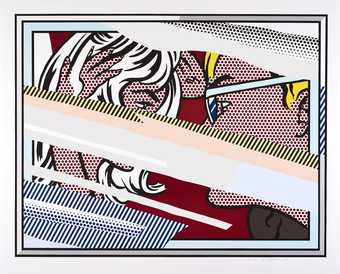
Roy Lichtenstein
Reflections on Conversation
(1990)
ARTIST ROOMS
Tate and National Galleries of Scotland. Lent by The Roy Lichtenstein Foundation Collection 2015
Symmetry & Mirror Images
We call perfect symmetry a mirror image. Reflections can populate a pattern or create a kaleidoscopic confusion.
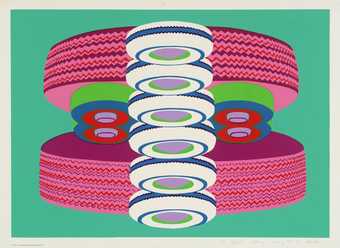
Derek Boshier
Untitled
(1964)
Tate
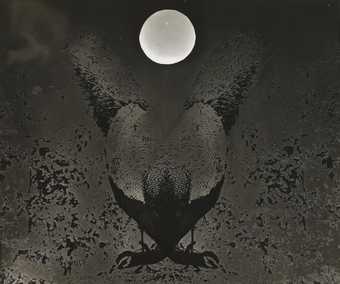
Jyoti Bhatt
Baroda
(c.1969)
Tate
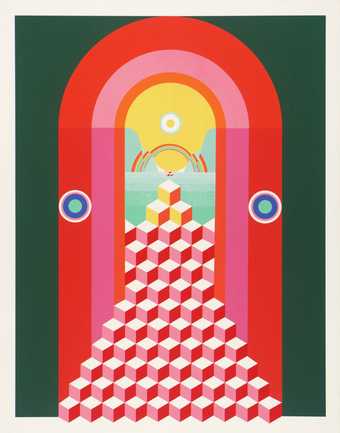
Jens Lausen
Map No. I Aircastle
(1969)
Tate
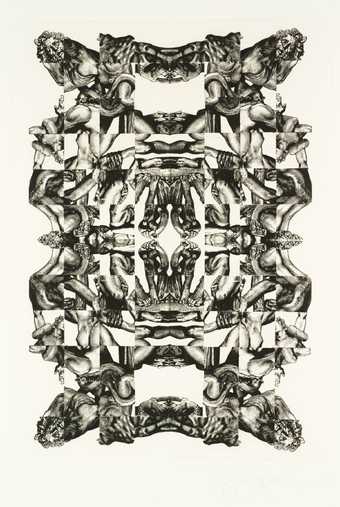
Tom Phillips
Canto XXV: [no title]
(1983)
Tate
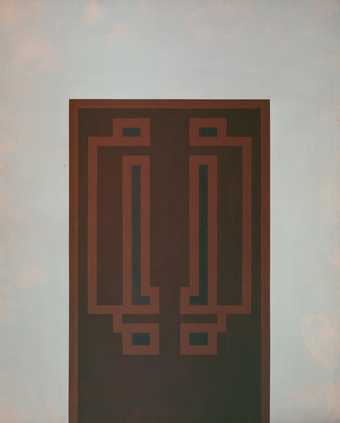
Robyn Denny
First Light
(1965–6)
Tate
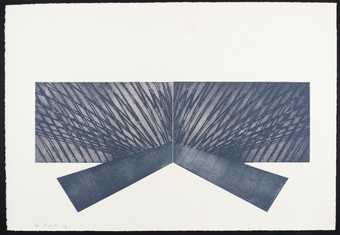
Richard Smith
III
(1972)
Tate
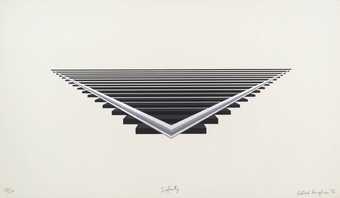
Patrick Hughes
Infinity
(1976)
Tate
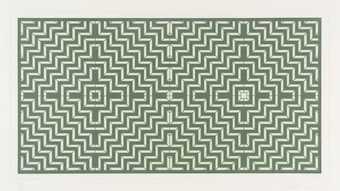
Tess Jaray
P.P.
(1991)
Tate
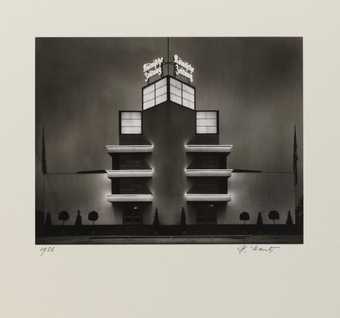
Werner Mantz
Kölnische Zeitung, Pressa, Cologne 1928
(1928, printed 1977)
Tate
Vagabondia 2000 is a seven-minute video by British artist Isaac Julien. It is set in the Sir John Soane’s Museum in London, the former residence of the British architect Sir John Soane, in which his collection of art and artefacts is still housed. The video shows a black female curator–conservator as she inspects the museum at night. As she moves around, fantastical figures in period dress appear in the house. The work’s title, Vagabondia, refers to a dancer featured in the film, who dances in the room that houses A Rake’s Progress, a famous series of paintings by William Hogarth. The dancer is based on the ‘Black vagabond’ that appears in one of the paintings.
At times the footage on the screen is split into two, with one side flipped horizontally so that the scene appears twice side by side like a mirror image. These split scenes merge and collapse into one another like a kaleidoscope of images.
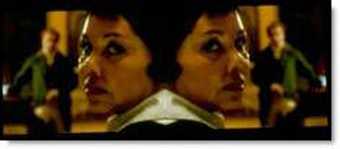
Sir Isaac Julien CBE RA
Vagabondia
(2000)
Tate
Patterns, fractals, infinity
Placing reflective surfaces parallel to each other set up endless reflections, giving a sense of infinity to the viewer For Yayoi Kusama, the experience of art is about more than just looking. It can also be about stepping into the artwork and being immersed in it, as in her Infinity Mirror Rooms.
In Infinity Mirrored Room - Filled with the Brilliance of Life you move along a reflective walkway over a shallow pool. All around tiny pulsing dots of light are repeated endlessly in the mirrors and water. It’s hard to see where the room really begins and ends, and you are completely surrounded by coloured dots.
From early in her life, Kusama experienced visual hallucinations which made her feel as if she was dissolving or disappearing, she describes this as ‘self-obliteration’.
‘One day after gazing at a pattern of red flowers on the tablecloth I looked up to see that the ceiling, the windows, and the columns seemed to be plastered with the same red floral pattern. I saw the entire room, my entire body, and the entire universe covered with red flowers’.
The pulsing dots of the Infinity Mirrored Room give some sense of this feeling of self obliteration. It allows her to make sense of her experiences and share them with others.

Yayoi Kusama
Infinity Mirrored Room - Filled with the Brilliance of Life
(2011/2017)
Tate
Other artists have also used mirrors to create this feeling of infinity in their work, including the viewer and also confusing them.
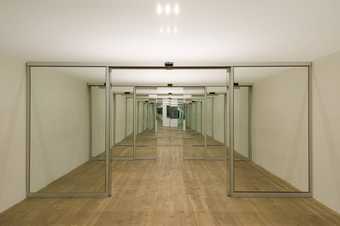
Carsten Höller
Sliding Doors
(2003)
Tate
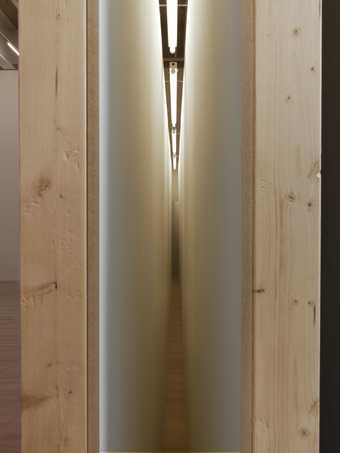
Bruce Nauman
Corridor with Mirror and White Lights
(1971)
Tate
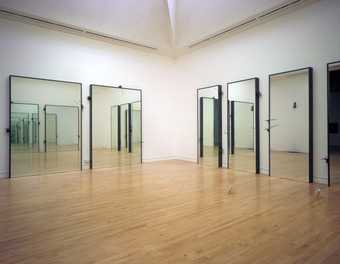
Rebecca Horn
Ballet of the Woodpeckers
(1986)
Tate
Water
The natural place for reflections is in still water. In landscape painting and photography, reflections can bring sparkle, interest and movement to an otherwise still scene.
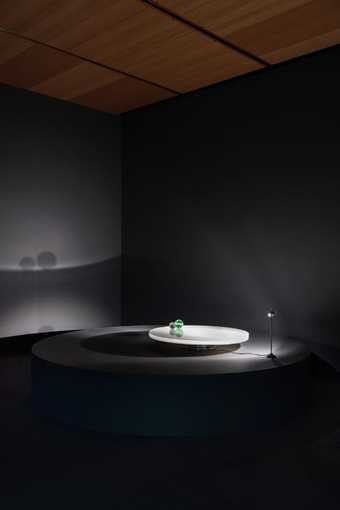
Liliane Lijn
Liquid Reflections
(1968)
Tate
Liquid Reflections is a hollow acrylic disc, containing water and revolving on a motorised turntable. On its surface, two acrylic balls rotate, and the water insite is dispersed into a collection of droplets all reflecting and refracting the light.
Liquid Reflections is Lijn’s attempt to contemplate the universe on an intimate scale.
“I see it a cosmic model not only in the metaphorical sense of being reflections within reflections, circles within circles and spheres within spheres but also through a demonstration of forces.”

